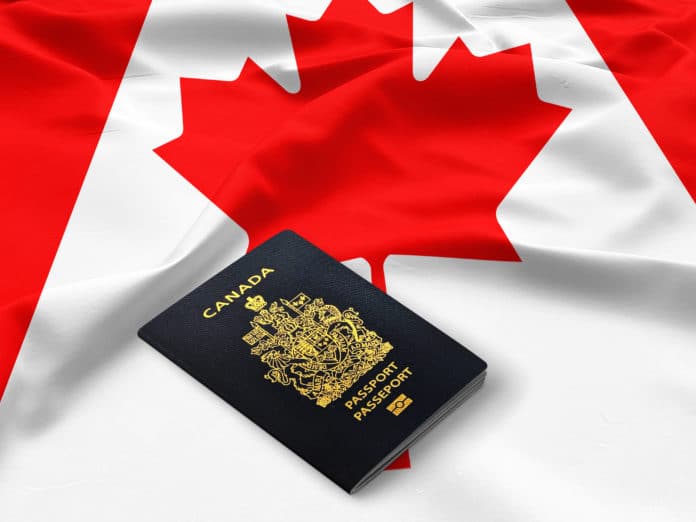Does FAFSA Cover Summer Classes in 2024? This article explores everything you need to know.
The FAFSA is a form used to determine eligibility for financial aid. If you’d like to receive help paying for college, it all starts with the Free Application for Federal Student Aid, also known as the FAFSA.
Financial aid offices at colleges and universities — from community colleges to Ivy League institutions — use the FAFSA to determine eligibility for financial aid, including student loans, grants, scholarships, and federal work-study programs.
Even if you think you make too much money for financial aid, you should still take the time to complete the FAFSA.
Table of contents
Where Do I Get a FAFSA Form?
You can complete the FAFSA online at fafsa.ed.gov, the official site administered by the U.S. Department of Education, and it’s always free. Stay away if you find yourself on a copycat site or a site offering assistance for a fee!
Need help filling it out? The FAFSA sites have (free) guidance and information available.
Who Should Use the FAFSA
The Free Application for Federal Student Aid (FAFSA) —an online form used to determine eligibility for federal student aid and most scholarships—is a must-complete application for any student who wants to pay for college using financial aid.
Even if the FAFSA makes you feel you make too much to qualify for financial aid, you should still complete the form. The FAFSA considers many factors in determining how much aid students can receive — more than family income and assets.
As long as you meet the basic eligibility requirements (high school diploma or equivalent, satisfactory academic progress, etc.), your qualifications will be evaluated, and you may be eligible for financial aid.
Read: How To Apply For Summer Classes At a Community College
What Documents Do I Need to File the FAFSA?
You’ll need to create a Federal Student Aid ID to apply for federal financial aid. You can get one by visiting fsa.gov/fafsa and clicking “Get an FSA ID.”
Apply for your own FSA ID–you cannot apply if you are assigned someone else’s FSA ID. Next, locate the school codes for each institution you plan to apply to.
Use the Federal School Code Search tool to list any school’s code.
Personal information
If dependent, you must list your Social Security and parents’ numbers. You must also list your driver’s license number if you have one and the number the Department of Homeland Security assigned to you if you are not a U.S. citizen.
Financial information
If applicable, the financial information (income and assets) of the student, the student’s spouse, and the student’s parents will be used to determine your eligibility for federal aid.
Filling Out the FAFSA
After gathering the necessary info, students complete the FAFSA application.
Log in to the FAFSA site and complete the form using your FSA ID. Your personal details (Social Security Number and citizenship status) will be entered first, followed by a series of questions determining student dependency status.
The next section will ask for info about you (the parents), including income, assets, and tax forms. You may be able to use the IRS Data Retrieval Tool to import previous tax returns.
While the FAFSA may seem like a lot of work, you can complete it in sections and save it to return to it when needed. You’ll have time to gather paperwork, as well.
When Do I Need to Complete the FAFSA?
Federal Student Aid deadlines are typically the same each year. And while you will want to plan your application timeline and apply early carefully, you should also be aware that most colleges have their financial aid deadlines.
The U.S. Department of Education makes the forms available around October of the previous academic year, with a federal deadline in the middle of the following June.
For example, the FAFSA forms were made available for the 2020-21 academic year on October 1, 2019, with a federal deadline of midnight CST on June 30, 2020.
Also, see: 25 Free Summer Online Classes for College Students in 2024
What Types of Aid Are Offered Through the FAFSA?
By filling out the FAFSA form, students can determine the amount of need-based aid they will be eligible for and learn the steps needed to secure that aid.
The FAFSA form can secure financial assistance through federal student loans, grants, scholarships, and work-study programs.
Grants
Grants are a major source of funding for students. They are free money, meaning you do not need to repay them. Grants are most often need-based and will be based on your FAFSA results.
Scholarship
One way to access scholarship money is through your school. These awards are free money that need not be repaid.
Often these awards are merit-based, based on outstanding grades, athletics, or some other achievement.
You may have to maintain satisfactory academic progress or perform well to keep receiving the financial award. There are many ways to access scholarship money.
Work-study courses
Some financial aid packages include a work-study option, meaning you will be expected to pay for your education by working at a campus job.
Contact your financial aid or employment office for more information on their process.
Federal Student Loans
To get financial aid, use the following order of precedence: scholarships and grants (from free money) before taking out a loan (borrowing money).
If you need to take out a loan to cover the cost of attendance, contact your financial aid office if you have questions or concerns.
If you feel you haven’t received enough money to cover the cost of attendance, you can appeal your financial aid package.
How Long Does it Take to Get the FAFSA money?
You should have notified the schools you applied to that you want to be considered for financial aid, completed and submitted any additional school-specific requirements, and submitted your application for need-based financial aid.
After submitting the FAFSA, some schools may take up to three months to confirm your application and send an award letter.
Once you receive the award letter, you must accept or deny the offered aid before the financial aid deadlines.
Does FAFSA cover summer classes?
If you’ve completed a FAFSA to become eligible for aid for the fall or spring semester, that FAFSA generally should cover all the courses you take over the academic year — including any summer classes.
Your summer courses may be classified as part of the 2024-2024 or 2024-2024 academic year, depending on how your school classifies them; ask your school’s financial aid office what FAFSA is needed for each summer program.
Also, check out: Summer School 2024: How Long It Is And Why You Should Attend
Does your school allow financial aid for summer classes?
When looking for grants to pay for summer classes, knowing how it could impact your financial aid is important.
Although the FAFSA helps determine eligibility for federal aid, you should also ask about school policies since not all schools allow students to receive
financial aid for summer classes.
If your school does permit you to obtain financial aid for a summer program, you will typically have to meet standard requirements for satisfactory academic progress.
These are the same standards that apply during the remainder of the school year, which means, you typically will be required to:
- Complete a certain number of courses and credit hours to earn a degree.
- Take courses that contribute to your degree requirements
- Students must earn a certain minimum grade-point average to be eligible to continue taking classes.
Have you exhausted your eligibility for federal financial aid?
Although the FAFSA can count toward your summer classes and help you become eligible for financial aid, you should know that Federal Student Loan limits exist for each academic year.
If you use your allotted funds during the fall and spring semesters, you won’t have money left over to get these types of loans for your summer semester.
FAQs about FAFSA
The good news is that you only have to apply for FAFSA once each year. The award you receive is good for an entire academic year, which consists of the fall, spring, and summer semesters (in that order). You need to reapply every school year.
The Free Application for Federal Student Aid (FAFSA) has no age limit. You can receive federal student aid even if you are in your 80s.
Applicants do need to be at least 13 years old to obtain an FSA ID or to submit the FAFSA online.
FAFSA is generally good for one full academic year, beginning in the fall. However, checking when the FAFSA is due is important because deadlines can change.
FAFSA doesn’t check anything because it’s a form. However, the form does require you to complete some information about your assets, including checking and savings accounts.
The Pell Grant is the largest federal grant program offered to undergraduates and is designed to assist students from low-income households. To qualify for a Pell Grant, a student must demonstrate financial need through the Free Application for Federal Student Financial Aid (FAFSA) form.
Students have to pay back financial aid if it is in the form of a loan, but they do not have to pay back grants, scholarships, or money awarded through a work-study program. Students eligible for grants or scholarships should exhaust those options before taking out loans.
Conclusion
Scholarships can allow you to lessen your financial burden, but they are generally offered for students with certain characteristics or achievements, like athletic ability or academic excellence.
Private educational organizations also offer scholarships, but getting an award for smaller sums of money is often difficult.
You can look into an educational employer that offers work-study opportunities and a program that pays you to work campus jobs while you go to school.
References
- How to Get Financial Aid For Your Summer Classes – joinjuno.com
- What to Know About Financial Aid for Summer Classes|usnews.com
- Which FAFSA® form do I need to fill out? | Federal Student Aid
- Does Financial Aid Cover Summer Classes? – Forbes Advisor





